This is a short pre op version for you to see in clinic that affects the first few days after your operation.
Information that will help you before your surgery
See the main surgery section for full advice how to progress your exercise, driving, increasing activity, tips on positioning and how to avoid complications.
What to wear
Before you come in to hospital for your operation think about the clothes that you will want to go home in. Loose fitting clothing with front fastenings and trousers with a loose waist band may be easier and more comfortable to wear both to go home in, and during the first few days after your operation.
A well supported, non-underwired but comfortable bra is best. It would be ideal to be front fastening, with adjustable straps and be a bigger cup size to allow for any swelling. This should be worn during the day and at night until your consultant advises to stop. To reduce the risk of infection 2 bras would be appropriate, one to wash and one to wear. Your breast care nurse can give you advice on this.
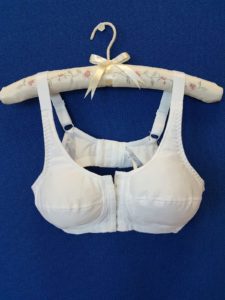
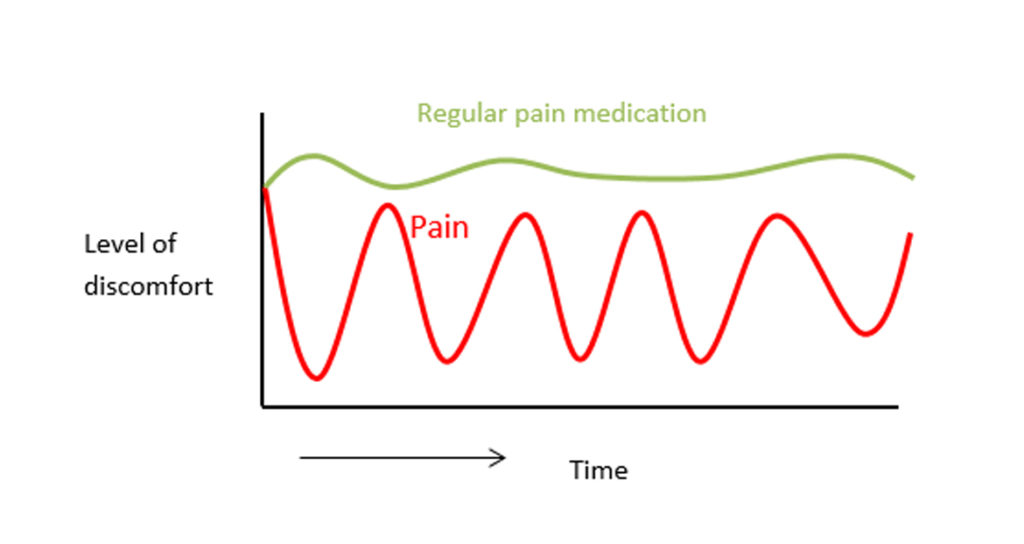
Discomfort and Pain
Discomfort, and some pain is common after any operation and you will be given a small supply of pain relief to take home with you. If you need additional or stronger pain relief, you should contact your GP after your surgery.
- It is very important to take the pain relief that you have been advised to take regularly especially in the first 2-3 weeks after your operation
- Pain relief will allow you to move more freely and less discomfort. It will help when you are completing your physiotherapy exercises in the day and can also give you a better night's sleep.
- Constipation is often a side effect of certain stronger pain relief. If constipation is a problem, drink plenty of fluids, make sure you have enough fibre in your diet, and consider using a gentle laxative available from the chemist.
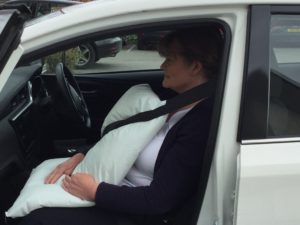
Leaving hospital and going home
You must not drive yourself home from hospital but you do still need to wear a seatbelt as a passenger.
You can use the seatbelt normally.
However if you need to cushion your wound for comfort on the journey home, try a small pillow placed across your chest.
Your exercises to begin immediately after your surgery
Breathing and circulation exercises
- Take several deep breaths every hour to keep your lungs clear.
- You may find it more comfortable to support your tummy wound with a pillow if you cough or sneeze. You will not harm your wound.
- Moving your feet up and down and circling your ankles regularly 5 times each way will help to keep your circulation working and reduce your risk of blood clots
- Try not to sit or lie with your legs crossed
- You can also do fist pumps (briskly make a full fist on both hands then stretch the fingers out) and move your wrists up and down and in circles to help reduce swelling in your arms/ hands.
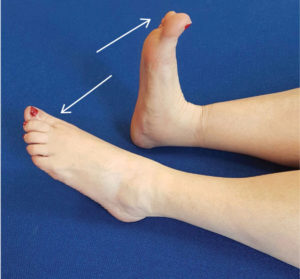
Getting out of bed
For the first 6 weeks after your operation, you should aim to use a “log roll” technique to get in and out of bed. This will help reduce pain and stress on your abdominal wound. You may need help with this for the first few days.
Log Roll Technique
- Lying on your back, bend your knees so your feet are flat on the bed
- Slowly roll your body onto your good side (the side that has not had surgery)
- Slide your legs off the side of the bed
- Gently push yourself up into a sitting position with your good arm (the arm that has not had surgery)
Reverse the procedure when getting into bed.
If you have had reconstruction to both sides, you will receive assistance from the ward staff when getting in and out of bed.
On returning home, we would advise that you continue to complete the log roll technique as described above. It is important that you do not try to sit straight up from lying (using your stomach muscles) as this may damage your new abdominal wounds.
Arm and shoulder exercises
Firstly remember not to lift your elbows above shoulder height whilst your drains are in.
You can do shoulder exercises the day after the removal of drains unless you have had an axillary node clearance (ANC). After an axillary node clearance (ANC) your elbows should not be elevated above shoulder height for 7 days to reduce the risk of lymphoedema.
Do your shoulder exercises 3-4 times every day to prevent your shoulder becoming stiff. This will help with healing, and reduce the risk of complications.
All the exercises should be done within the limits of your pain. It is common to feel a pulling sensation when performing these exercises and some temporary discomfort afterwards. Gentle exercise will do no harm and is very important.
You should start your exercises with a posture check. You should be sitting straight with your shoulders level and relaxed.
Exercise 1: Shoulder Shrugging
Gently lift your shoulders up towards your ears then relax back down.
Repeat 5-10 times
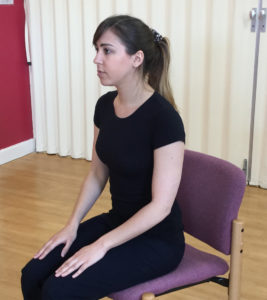
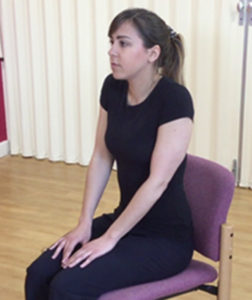
Exercise 2: Shoulder Circling
Gently circle your shoulders forwards, and then backwards.
Repeat 5 times.

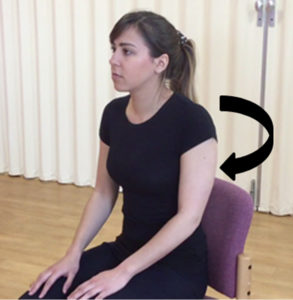
Exercise 3 - Lifting your arm forwards
Bend your elbows to allow your hands to rest on your shoulders. Gently lift your elbows to point forwards. You may feel a pulling sensation however, this is not harmful.
Hold for 5 seconds then slowly lower your elbows back down to the starting position.
Repeat 5 times.
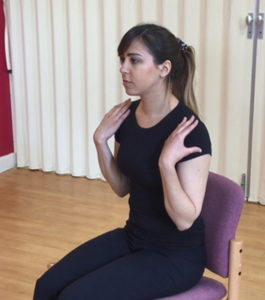
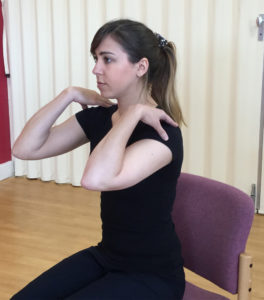
Exercise 4 - Lifting your arm out to the side
Bend your elbows to allow your hands to rest on your shoulders. Gently lift your elbows out to the side until they reach shoulder level then lower back down. You may feel a pulling sensation however, this is not harmful.
Hold for 5 seconds then slowly lower your elbows back down to the starting position.
Repeat 5 times.

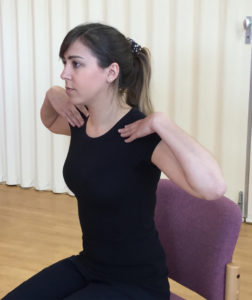
Exercise 5 - Hands behind your head
Bend your elbows to allow your hands to reach behind your head. Gently push your elbows backwards. You may feel a pulling sensation however, this is not harmful.
Hold for 5 seconds then slowly bring your arms back to the starting position.
Repeat 5 times.

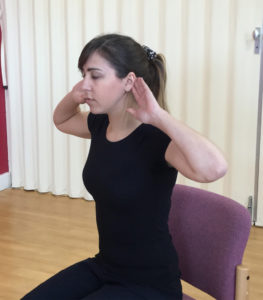
Exercise 6 - Hands behind your back
Bend your elbows to allow your hands to reach behind your back. Aim to reach your hands higher up your back. You may feel a pulling sensation however, this is not harmful.
Hold for 5 seconds then slowly bring your arms back down by your side.
Repeat 5 times.
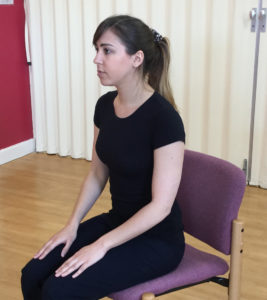
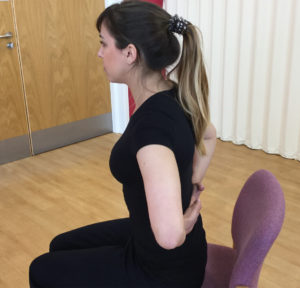
Should you have any concerns or worries about your exercises please contact the physiotherapists on the ward (F1 South) on 0161 291 2195.
Drains
You are likely to have 3-4 surgical drains in following surgery to collect any excess fluid. Some drains are removed on the ward however you may go home with your drain.
Here are some tips for going home with drains.
- You are safe to walk with drains in. It may be useful to carry them in light shoulder bags for ease.
- You may need additional pillows at home to help you find a comfortable position during the day and at night.
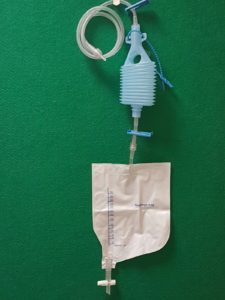
- You should not lift your elbow above your shoulder height whilst drains are in. you can still reach your head to brush your hair as normal and should complete the physiotherapy exercises above for the first 5-7 days.
- Your drain/ drains will be removed on the ward. Patients will occasionally be allowed home with a drain but this is infrequent. Allow your arm to rest following drain removal and do not complete your physiotherapy exercises for the rest of that day. Start back with your exercises the following day.
Posture
It is very important to look after your posture following your operation. It is common to feel that you need to be protective of your wounds as you may have some difficulties with standing or walking normally immediately after your surgery. The physiotherapist on your ward will help you work towards more upright standing however, this can take 5 days or more. You will be encouraged to keep a slight bend in your hips and your knees whilst your stomach wounds are healing to avoid unnecessary pulling however, you should aim to keep your back and shoulders as straight as possible.
Your ward physiotherapist can also show you some gentle exercises to help relieve any back ache whilst you are unable to straighten up fully. This will help you avoid getting stiffness in your shoulder, neck and elbow and limit any future problems. You may find it comfortable to sit with your arms supported on pillows in front of you. This will allow you to relax your shoulders more and open the armpit to help lymph fluid flow. This position is really useful to relieve discomfort. Try this for 30-60 minutes 3-4 times a day in the first week or two.
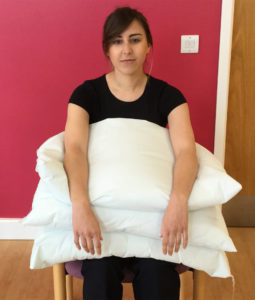
Swelling/Seroma
It is common to experience swelling around your surgical site or in your armpit following your surgery. This is a natural collection of fluid called a Seroma which the body will gradually reabsorb over time.
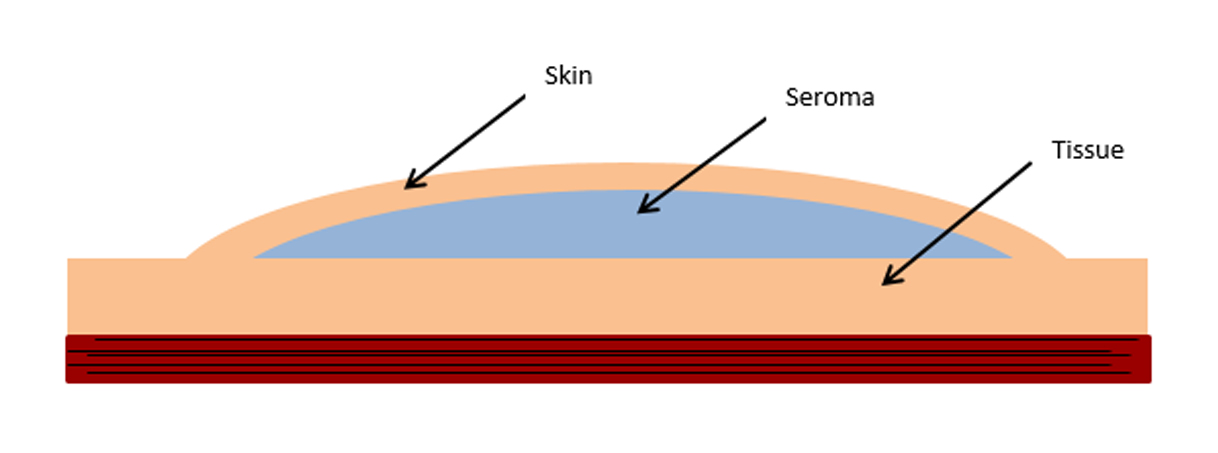
A seroma is not harmful but occasionally becomes very uncomfortable or puts too much pressure on the new wound. If this happens, you will need to contact your plastics dressings clinic or ward F1 South (evenings, weekends and bank holidays) to have this excess fluid drained. This is a small painless procedure which may have to be done more than once during your recovery.
If you have had a seroma drained, please leave your physiotherapy exercises for the rest of that day to prevent the seroma refilling. Start back with your exercises the following day. Try to reduce any repetitive arm actions that may encourage the seroma to fill more quickly such as sweeping, vacuuming or computer keyboard work. Your breast care nurse may suggest you see the physiotherapist for help if your seroma needs draining frequently.
Activity and Support at home
If you live alone, you may be concerned about how you will manage after your surgery. You will be able to wash, dress, cook simple meals and complete light household tasks yourself but it will be much slower and you will be very tired. Don’t try to lift anything too heavy with your affected arm. A small kettle or a weight no heavier than a bag of sugar (approx. 2lbs or 1Kg) is enough.
You must make arrangements for help with heavier tasks such as shopping, vacuuming, and cleaning for the first few weeks as you should not be lifting.
If you are responsible for the care of someone else and are worried about this, please discuss this with your Breast Care Nurse. You may need help initially whilst you recover.
Body Image
Remember this reconstruction is work in progress. At this early stage you will have normal swelling and bruising after your surgery and this will take time to settle. This will affect how your reconstruction looks and is not your final outcome. Please talk to your breast care nurse if you have any concerns.
For full information about your surgery visit the my surgery section on the website
yoursurgeryandrehab.co.uk
You can look at this as much as you like before and after your operation and may like to show your family or friends who can help you over the next few weeks.
You will attend a class within 6-8 weeks of your surgery as part of your rehabilitation and treatment. For Class information see the website